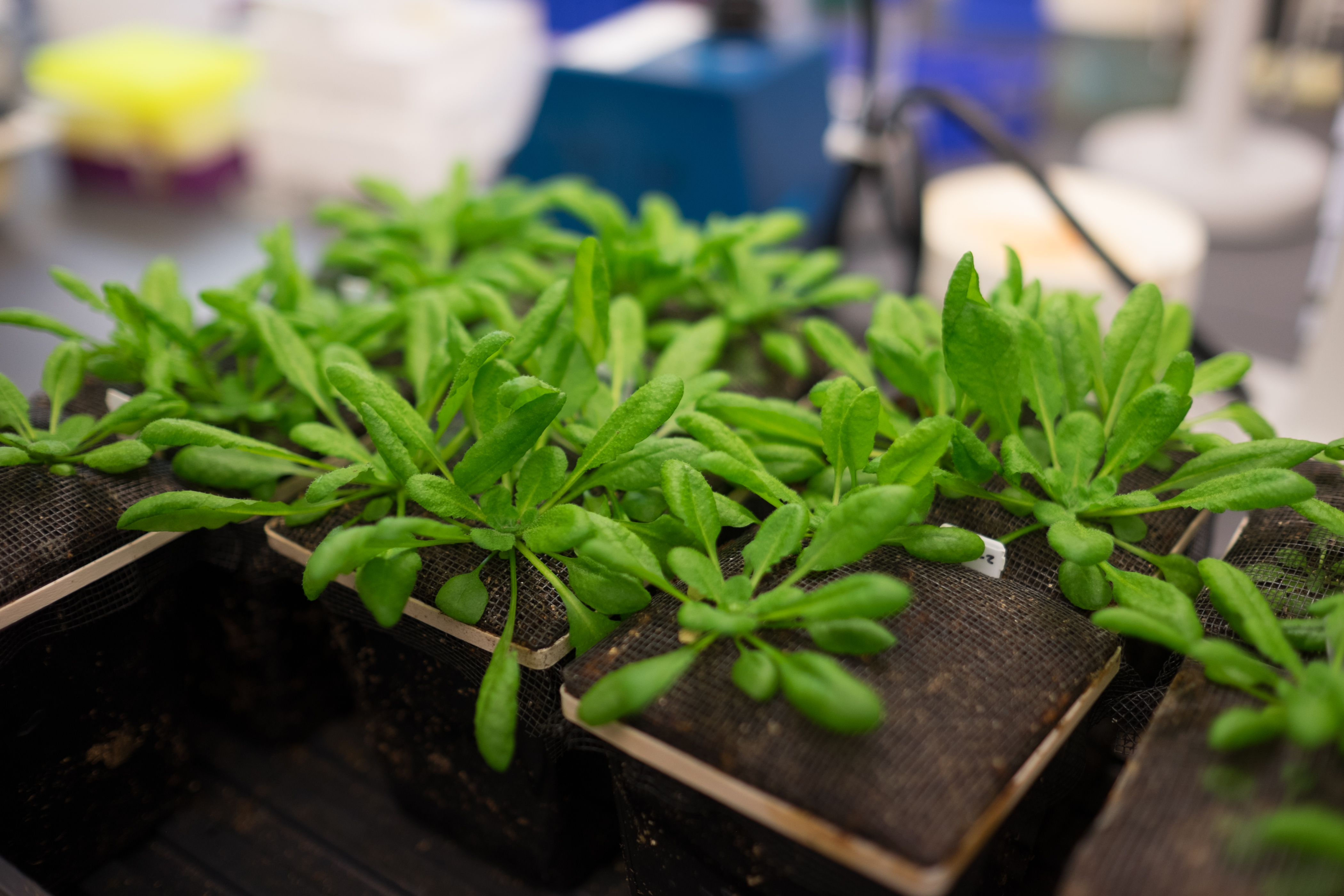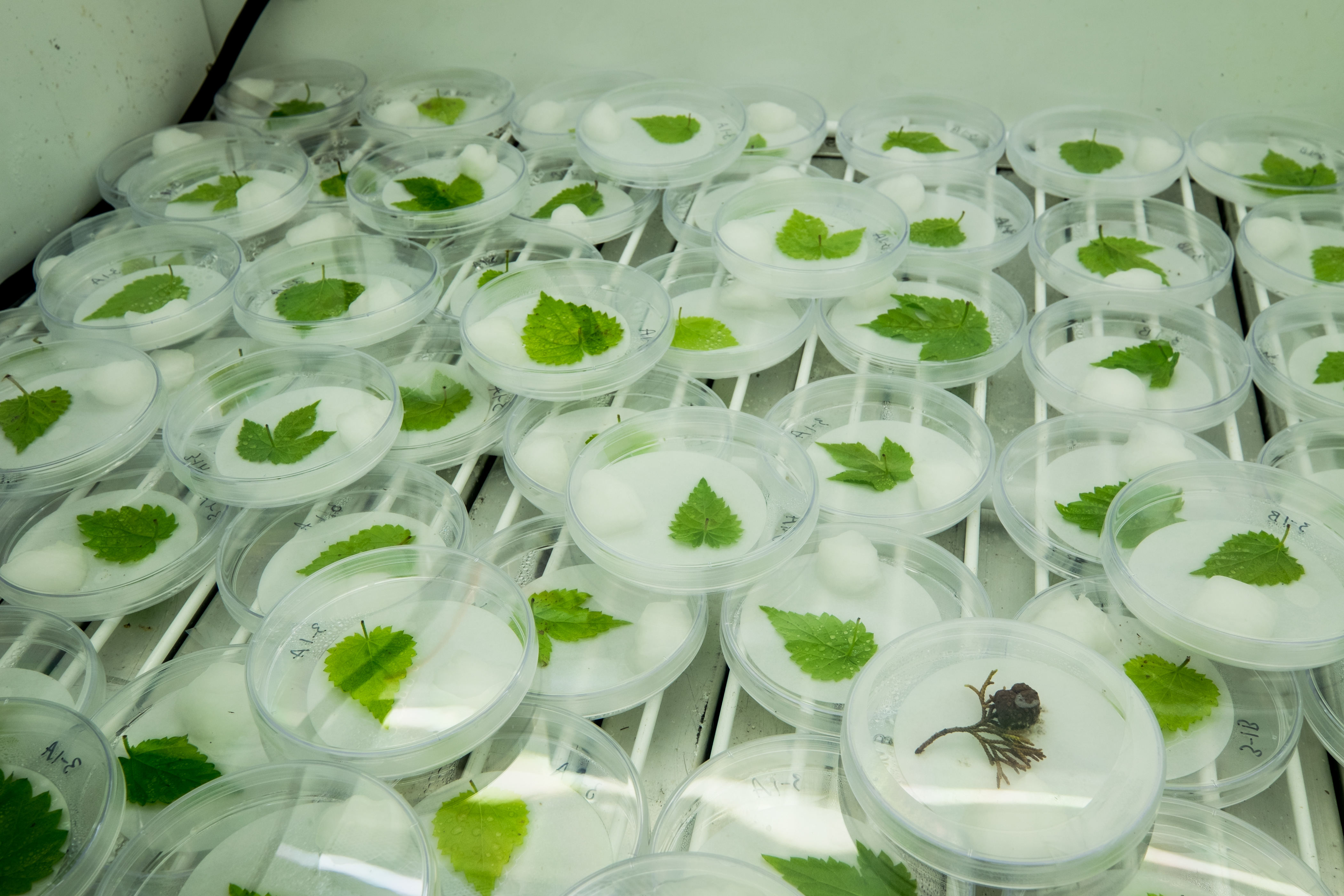From Lab To The Field, Research Takes Food Where It's Needed Most
The right food for the right location: This has long been the mantra of agricultural research, which sought to develop the most productive varieties of food matched to their ideal climatic regions. But what if this didn't have to be the case?



By James Dau
The right food for the right location: This has long been the mantra of agricultural research, which sought to develop the most productive varieties of food matched to their ideal climatic regions.
But what if that didn’t have to be the case? What if farmers could grow corn in Florida or potatoes in Texas? What if any food could be grown wherever it was needed? These are the questions MSU plant geneticist Brad Day and his team are seeking to answer.
A self-proclaimed gene jockey, Day has spent much of his career conducting basic research on the genetic factors that determine how plants respond to stresses from changing environmental and disease conditions. Now, as head of one of the most cutting-edge plant science laboratories in the country, he is turning his attention toward finding applications for the fundamental work his team has produced.
“Being at MSU allows us to direct our fundamental research toward an intended purpose or outcome,” said Day, associate professor in the Department of Plant, Soil and Microbial Sciences. “Day to day, we spend a lot of time cloning genes and studying minute processes within the plant, but we never forget that it has a long-term purpose in bringing better food to more people.”
The inroads carved by Day and his team into the world of plant stress response could one day prove the key to developing crops more capable of resisting conditions that today spell disaster, like drought or epidemic. Now, he and his team are looking to apply their genomic expertise to fast-track those super crops and deliver them to the fields where they are most needed.
A SPIRIT OF COLLABORATION
Forging connections with MSU’s distinguished community of plant scientists, from geneticists to breeders to pathologists, is key to bridging the gap between fundamental research and its long-term field applications. Through the Plant Resilience Institute, Day’s team is beginning to partner with the accomplished dry bean breeding program of CANR researcher James Kelly, which has produced 47 dry bean varieties over the last 35 years.
“We’re helping each other,” Day said. “They’re helping us find applications for all the lab work we’ve done over the years and we’re helping them fast-track their decades-long breeding programs. We all want to take advantage of the incredible environment we have here at the College of Agriculture and Natural Resources.”
That same spirit of collaboration has already yielded results. Working with researchers from several departments on campus, Day’s team has helped adapt a biosensor created to detect pathogens in humans into a tool that can do the same for plants, making it a potent instrument for farmers to identify and track plant disease outbreaks and epidemics.
Amy Baetsen-Young, PhD student and co-inventor of the biosensor, came to MSU in part for the opportunity offered at labs like Day’s to see research move from the lab to field applications. Working with three lab groups on campus, including Day’s, has been fulfilling work.
“We see both sides of the coin in this lab,” Baetsen-Young said. “We’re doing biochemistry experiments, but we’re thinking about how they could apply to places in the world that have real needs. A collaborative environment like this allows for translational research that starts with basic biology and ends up on farms.”
AN EYE TO THE FUTURE
The farm isn’t a place Day visits often in fact; it was at MSU that he first set foot in a farm field. While certainly a personal milestone, it represented something more than that – the direction of the future of his lab, the merger of fundamental laboratory science with applied fieldwork.
“I felt like Neil Armstrong,” Day said. “It made me more anxious to see our work find applications out in the world, whether that comes from me directly or through partnerships with the phenomenal colleagues I have here in the college.”
The energy and accomplishments of Day’s lab continues to bring new researchers into the CANR and push research forward. Miranda Hous, a postdoctoral scientist from St. Louis, Missouri, joined Day’s lab to study the impact of biotic and abiotic stress on common beans.
“My partner and I were incredibly lucky when we were looking for research opportunities,” Hous said. “We ultimately made the decision to come to MSU because of the network of people here and the opportunities for interaction and collaboration with so many other scientists. We knew it was the place where we could become better scientists.”
LEARN MORE
canr.msu.edu/inthefield
This article was published in In the Field, a yearly magazine produced by the College of Agriculture and Natural Resources at Michigan State University. To view past issues of In the Field, visit www.canr.msu.edu/inthefield. For more information, email Holly Whetstone, editor, at whetst11@msu.edu or call 517-355-0123.



 Print
Print Email
Email





